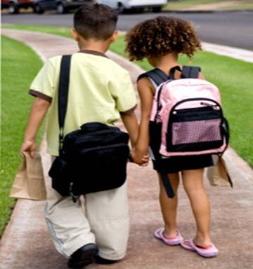

| . |
| "The wisest mind has something yet to learn." |
| George Santayana |

Students who are gifted require educational experiences not ordinarily offered in the general school
curriculum to develop demonstrated or potential aptitudes, creativity, and leadership.
Typically, students who are gifted perform significantly above average on standardized measures of
intelligence and excel academically in one or more areas. Creativity and problem-solving are chief
characteristics associated with giftedness.
Quality research consistently and conclusively demonstrates that students who are gifted appear in all ages,
grade levels, socioeconomic levels, ethnic groups, and both genders in about equal numbers. However, in
practice, certain groups of students typically go under-identified: students from low-income families; those
who are culturally or linguistically different, and learners with disabilities.
Studies reveal that most students who are gifted do not match their tested ability with comparable
achievement in school. The greatest challenge facing these students is achieving their potential. In spite of
the common belief that they are more capable of success than others, their needs are not clearly understood,
resulting in a high risk of going unchallenged and receiving instruction designed for someone else's needs.
These students benefit from teaching strategies that emphasize creativity, intellectual initiative, critical
thinking skills, leadership, responsibility for learning, flexibility, collaboration, reflective teaching, student
choices, planning with their teachers, opportunities for mentor partnerships, and curriculum compacting.
Here are some resources to better understand the educational needs of students who are gifted and how to
meet those needs:
curriculum to develop demonstrated or potential aptitudes, creativity, and leadership.
Typically, students who are gifted perform significantly above average on standardized measures of
intelligence and excel academically in one or more areas. Creativity and problem-solving are chief
characteristics associated with giftedness.
Quality research consistently and conclusively demonstrates that students who are gifted appear in all ages,
grade levels, socioeconomic levels, ethnic groups, and both genders in about equal numbers. However, in
practice, certain groups of students typically go under-identified: students from low-income families; those
who are culturally or linguistically different, and learners with disabilities.
Studies reveal that most students who are gifted do not match their tested ability with comparable
achievement in school. The greatest challenge facing these students is achieving their potential. In spite of
the common belief that they are more capable of success than others, their needs are not clearly understood,
resulting in a high risk of going unchallenged and receiving instruction designed for someone else's needs.
These students benefit from teaching strategies that emphasize creativity, intellectual initiative, critical
thinking skills, leadership, responsibility for learning, flexibility, collaboration, reflective teaching, student
choices, planning with their teachers, opportunities for mentor partnerships, and curriculum compacting.
Here are some resources to better understand the educational needs of students who are gifted and how to
meet those needs:
There is a broad range of placement and service options for students who are gifted. Enrichment (additions
to regular programming), acceleration (moving through the regular curriculum at a more rapid rate), "pull-out"
programs, magnet schools, and supported inclusive education in which students remain in general education
classes with the benefit of supplementary aids and services are all effective service delivery models,
depending on the individual needs of learners.
to regular programming), acceleration (moving through the regular curriculum at a more rapid rate), "pull-out"
programs, magnet schools, and supported inclusive education in which students remain in general education
classes with the benefit of supplementary aids and services are all effective service delivery models,
depending on the individual needs of learners.
| Multicultural Education |
| Inspiring Equity, Inclusion, and Social Justice |
| Creating Learning Communities |
| Teaching Students with Diverse Learning Needs |
| Elementary |
| Secondary |
| TOM MIHAIL, PH.D. |



















































